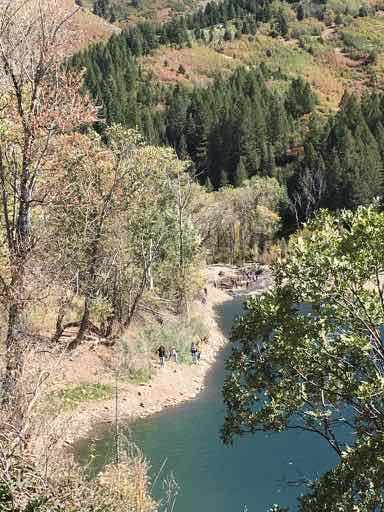"LTER" stands for "Long Term Ecological Research". The National Science Foundation provides funding to 28 LTER sites around the world.
When I get the once in a lifetime chance to travel to Antarctica, I will be at one of those 28 worldwide selected sites to work with professional scientists and explorers. The name of the LTER site I will be working at is known as the "Dry Valleys of McMurdo".
 The logo for the McMurdo Long Term Ecological site.
The logo for the McMurdo Long Term Ecological site.
After learning about what LTER sites where, and the value of the research that be gained from those sites, American Fork Junior High Biology Students decided that they would like to start their own LTER in American Fork Canyon, which is just a few minutes away from their school.
They focused on the area around a beautiful reservoir up the canyon called Tibble Fork.
 Tibble Fork Reservoir, located up American Fork Canyon, Utah.
Tibble Fork Reservoir, located up American Fork Canyon, Utah.
Students collected plankton from the Reservoir with a plankton net.
 Dragging the plankton net. (Photo credit Gracelyn Ullery)
Dragging the plankton net. (Photo credit Gracelyn Ullery)
Students then took the collected plankton back to the microscopes in our classroom for identification. Many different types were noted.
 Plankton Sample from microscope. (Photo credit Lizzie Roundy)
Plankton Sample from microscope. (Photo credit Lizzie Roundy)
They measured the stream flow into the reservoir.
 Measuring stream flow. (Photo credit Gracelyn Ullery)
Measuring stream flow. (Photo credit Gracelyn Ullery)
They also measured pH, salinity, sedimentation, and turbidity of the reservoir.
 Measuring the clarity (turbidity) of the reservoir with the Turbidity Tube.
Measuring the clarity (turbidity) of the reservoir with the Turbidity Tube.
 Measuring pH, sedimentation, salinity, and turbidity of the water.
Measuring pH, sedimentation, salinity, and turbidity of the water.
We will follow up with visits later in the year to observe changes in this site over time, which is the idea of LTER sites.


Comments
Add new comment